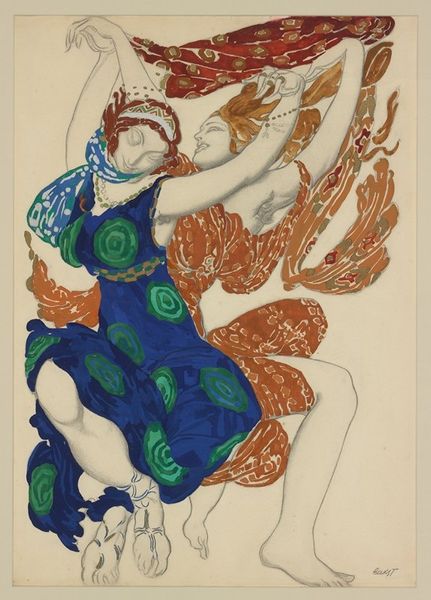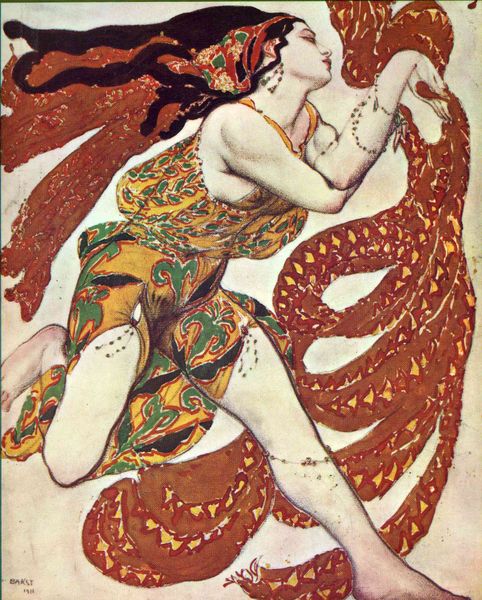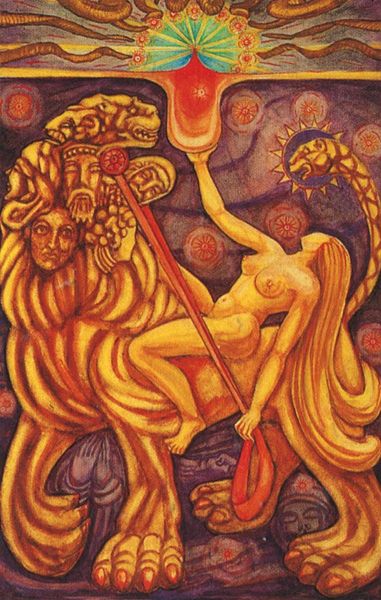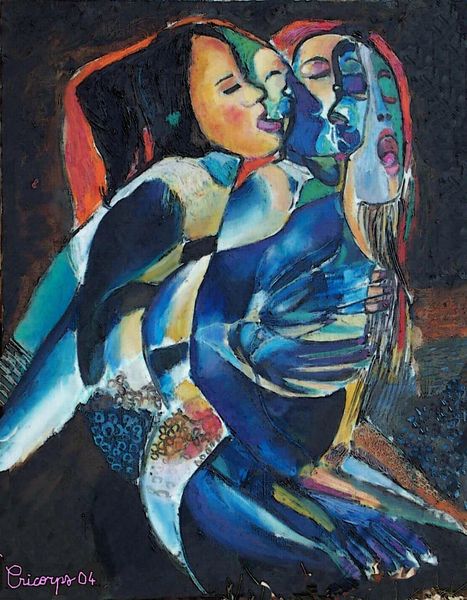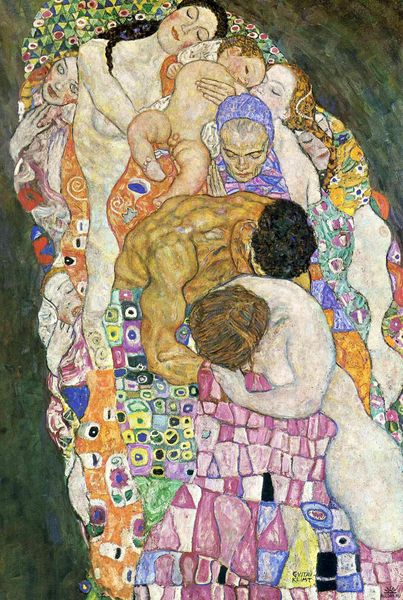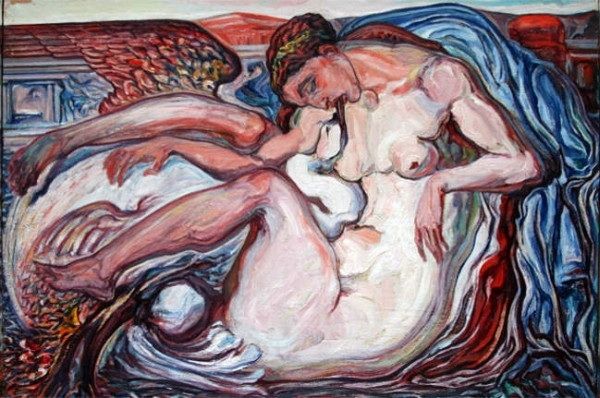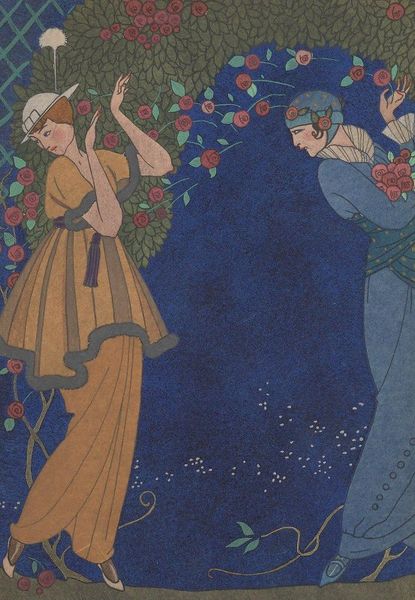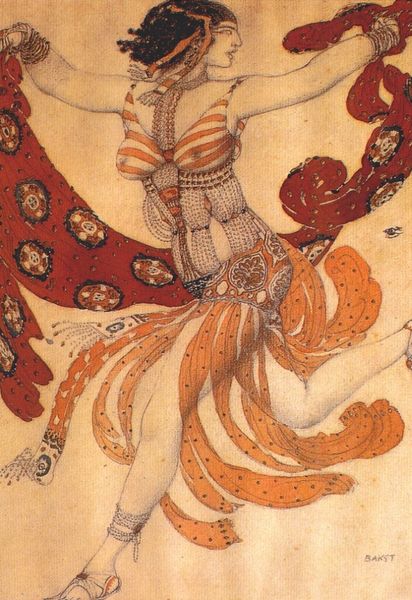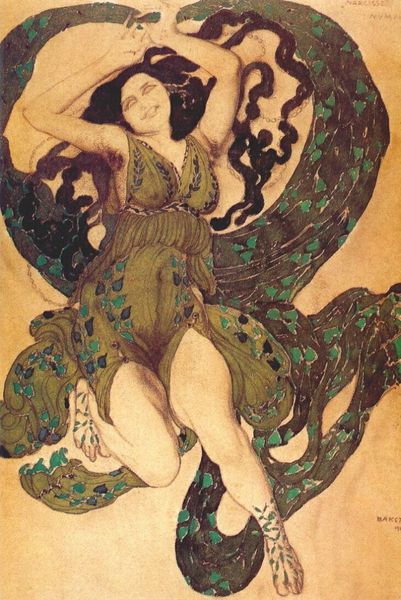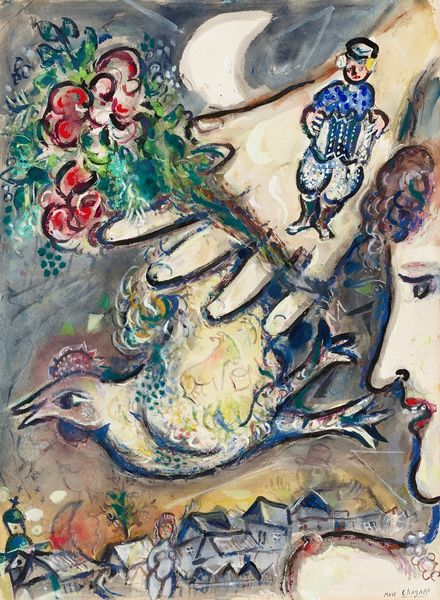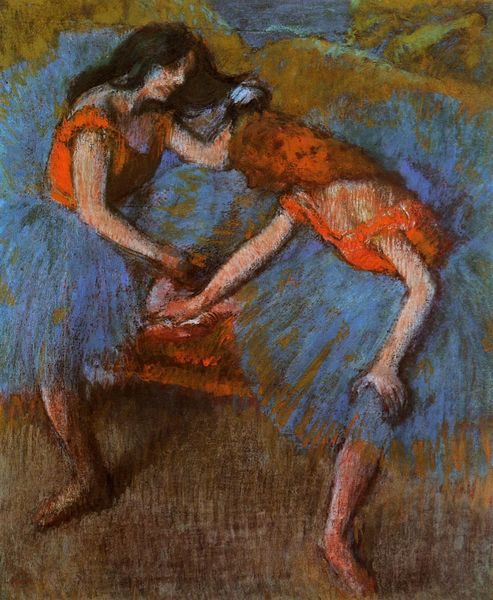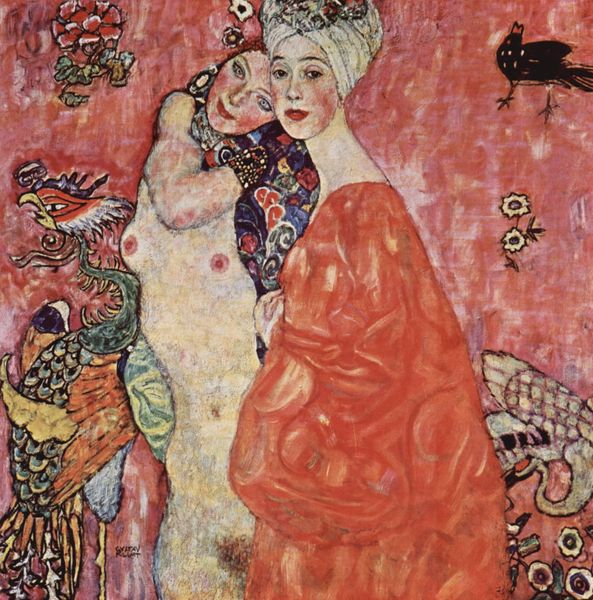
drawing
#
portrait
#
drawing
#
art-nouveau
#
fantasy art
#
caricature
#
surrealism
#
costume
#
symbolism
#
portrait art
Copyright: Public domain
Curator: Looking at this drawing from 1911, a design for operatic costumes by Léon Bakst, I am struck by its sense of vibrant theatricality, even in its stillness. What catches your eye? Editor: Immediately, the bodies draw my attention, specifically the exposed underarm hair of the woman in orange—its stark portrayal challenging early 20th-century notions of feminine beauty and performativity. The work demands we see past conventional narratives. Curator: Bakst was a celebrated stage designer for the Ballets Russes. The costumes he created weren’t simply visual adornments, they were integral to character development. This piece exemplifies his commitment to blending vibrant colors with bold shapes to communicate meaning beyond words. Editor: Indeed. The orientalism inherent in Bakst's vision demands careful consideration. The costumes themselves may exoticize cultural traditions while paradoxically disrupting accepted standards of the period—pushing boundaries on gender and race. The use of caricature also makes one wonder about the artistic intent and whether it served to promote understanding or further perpetuate stereotypes. Curator: Precisely. These images contributed to a wider artistic dialogue about orientalism at the time and a new interpretation of stage costume and dance. Consider the impact that such strong visuals must have had on audiences back then. The Ballet Russes was an immensely popular spectacle. Editor: I see this drawing as pushing against those norms and expectations. It allows us to question accepted aesthetics and gender representations. For instance, even now, it provokes discussion regarding body image standards prevalent in opera. Curator: By challenging audiences visually, Bakst invited viewers into a wider world. His theatrical vision served as an invitation to rethink and reimagine culture and norms. Editor: Agreed. Analyzing art like this illuminates how our perception of beauty and cultural norms have historically shifted – it asks us to confront existing biases and societal structures.
Comments
No comments
Be the first to comment and join the conversation on the ultimate creative platform.
